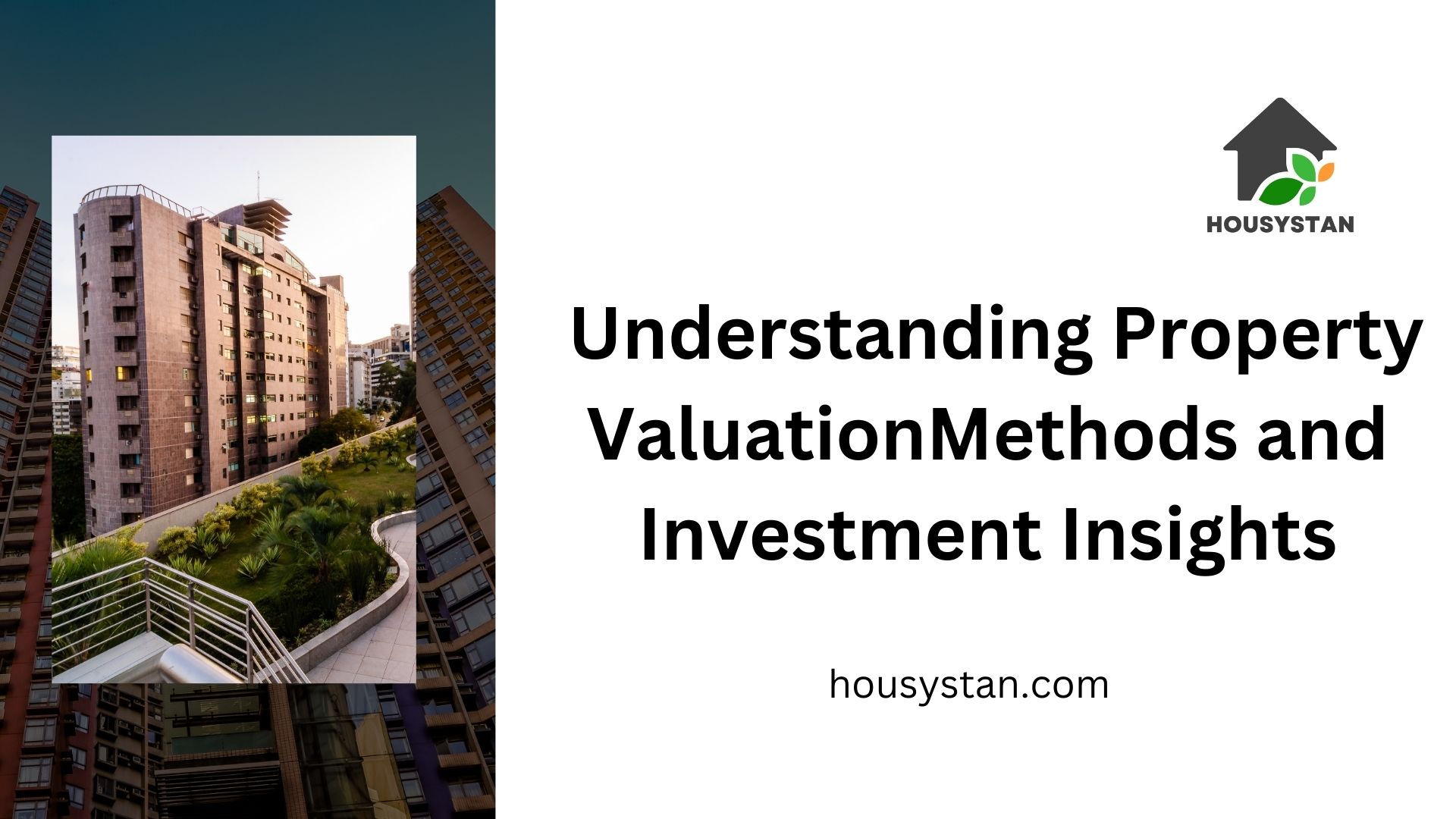Understanding Property Valuation Methods and Investment Insights
Read latest blogs and articles from Housystan

The Information mentioned here was last updated on:
31/12/2025Understanding Property Valuation Methods and Investment Insights
Investing in property has always been a reliable way to grow wealth. However, understanding property valuation methods is crucial for making informed decisions. This article delves into various approaches to property valuation while offering insights into how these valuations impact investment strategies. We'll break down complicated concepts into easy-to-understand terms, providing valuable knowledge to both novice and seasoned investors.
What is Property Valuation?
- Verified Tenants/Buyers
- Unlimited Property Listing
- Zero subscription/charges fee
Property valuation is the process of determining the economic value of real estate. This valuation plays a pivotal role in various scenarios, such as buying, selling, taxation, and insurance. Understanding how a property is valued helps investors to make strategic decisions aligned with their financial goals.
Why is Property Valuation Important?
- Informed Decision Making: Knowing the market value of a property helps in making sound investment choices.
- Risk Management: Accurate valuations aid in identifying potential risks associated with investing.
- Financial Planning: Understanding value fluctuations helps in planning long-term financial strategies.
Popular Property Valuation Methods
There are several approaches to property valuation, each serving different purposes and offering unique insights. Here are the most prevalent methods used by professionals in the industry:
1. Comparative Market Analysis (CMA)
- What It Is: This method involves comparing a property to similar properties that have recently sold in the same area.
- Key Features:
- Based on actual sales data.
- Relatively quick and easy to perform.
- Ideal for residential properties.
- Investment Insights: CMA helps investors gauge the fair market value of a property by considering local trends and similar property sales.
2. Cost Approach
- What It Is: This method calculates the cost to replace or reproduce a property minus depreciation, plus land value.
- Key Features:
- Useful for new constructions.
- Considers land improvements and depreciation.
- Emphasizes replacement cost.
- Investment Insights: The cost approach is beneficial when evaluating unique properties where comparable market data may not be available.
3. Income Capitalization Approach
- What It Is: This method estimates the present value of a property based on its income-generating potential.
- Key Features:
- Focuses on rental and income properties.
- Converts income into an estimate of property value using capitalization rates.
- Highly data-driven.
- Investment Insights: Ideal for commercial real estate investors focusing on potential income streams and long-term profitability.
4. Gross Rent Multiplier (GRM)
- What It Is: This valuation technique utilizes the ratio of property price to its annual rental income.
- Key Features:
- Quick assessment tool.
- Simplifies comparison of rental properties.
- Does not consider expenses or vacancies.
- Investment Insights: GRM is excellent for investors assessing rental property value quickly, though it should be used in conjunction with other methods for accuracy.
5. Automated Valuation Models (AVMs)
- What It Is: AVMs use algorithms and data analytics to provide a property valuation.
- Key Features:
- Relies on technology and large data sets.
- Provides quick estimates.
- Limited by data accuracy and availability.
- Investment Insights: AVMs are popular for a high-level valuation overview, useful for initial property screenings or portfolio updates.
Factors Influencing Property Valuations
Understanding factors that influence property valuation is just as important as understanding the methods themselves. Here are some key influencers:
- Location: Proximity to amenities, schools, and employment centers can significantly impact a property's value.
- Market Conditions: Supply and demand dynamics in the real estate market affect pricing and valuation trends.
- Property Condition: The age and state of the property, including any upgrades or necessary repairs, influence its valuation.
- Zoning and Regulations: Local zoning laws and regulations can dictate property value by affecting potential uses and development.
How Valuation Impacts Investment Strategy
The valuation of a property is a crucial element in shaping an effective investment strategy. It helps investors in several ways:
- Identifying Opportunities: Knowing the market value and potential price appreciation of a property aids in identifying underpriced investments.
- Budgeting and Financing: Accurate valuations ensure proper budgeting and can influence financing options and terms.
- Asset Allocation: Understanding property values helps in diversifying portfolios by selecting a mix of property types and locations.
Tips for Conducting Your Property Valuation
For those keen on getting a handle on property valuation for personal investment purposes, consider these straightforward tips:
- Leverage Multiple Methods: Employ more than one valuation method to get a well-rounded understanding of a property's value.
- Consult Professionals: Engage real estate agents or certified appraisers for accurate assessments.
- Stay Informed: Keep updated on market trends and economic indicators that may influence property values.
- Use Technology: Explore digital tools and AVMs for quick property assessments and comparisons.
Conclusion
Understanding property valuation methods is a cornerstone of real estate investment. By familiarizing yourself with different approaches like CMA, Cost Approach, or Income Capitalization, and recognizing the factors affecting these valuations, you are better equipped to make informed decisions. This knowledge not only mitigates risks but also enhances your ability to identify lucrative investment opportunities and develop robust financial strategies that stand the test of time.
For more insights and resources, consider exploring other articles on property investment strategies and market trends to expand your understanding further.
(This article is for informational purposes and should not be taken as financial advice. Always consult a professional for tailored investment advice.)